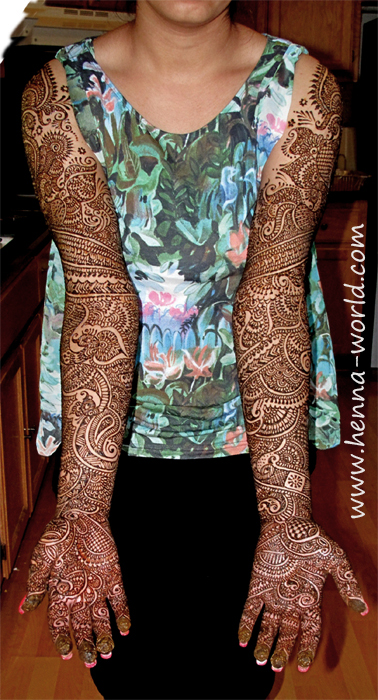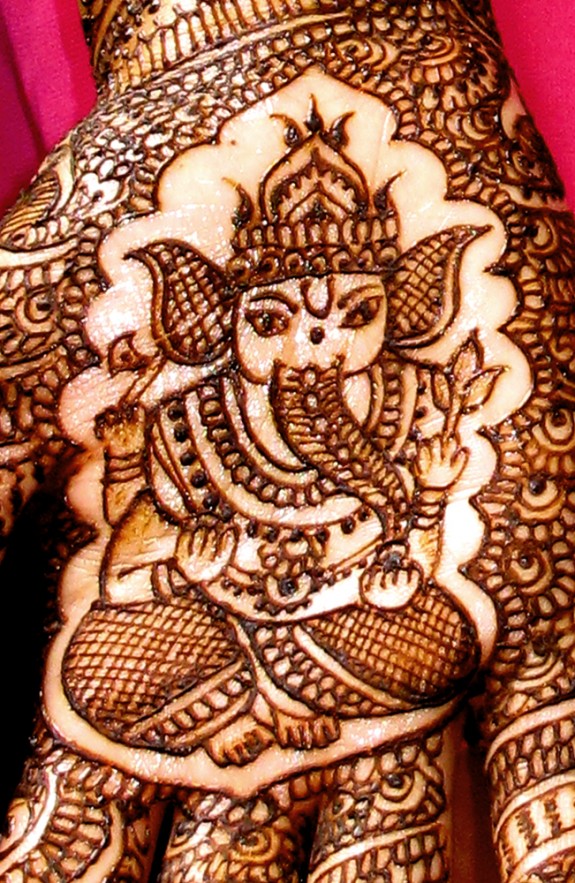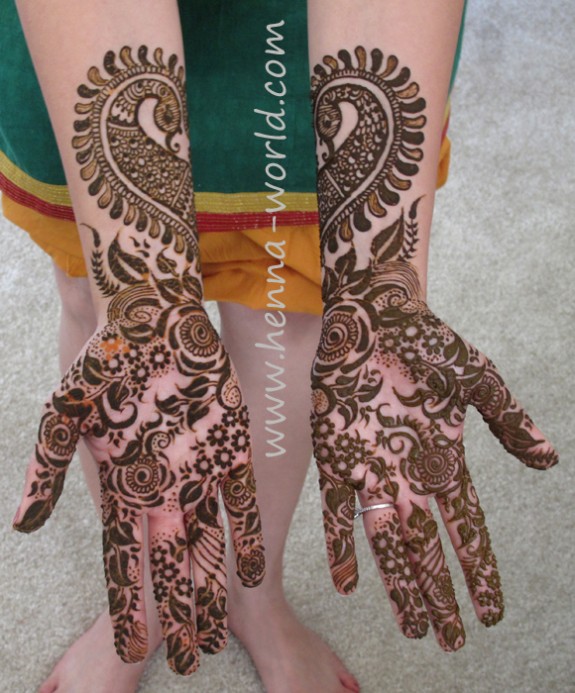It’s no surprise that the ancient Mughal custom of painted a bride’s hands and feet with mehendi, or henna paste, has become a part of modern and traditional South Asian weddings worldwide! The dark brown paste is delicately applied in intricate patterns by a professional a few nights before the wedding day – by the time it dries and cracks off, a bright, orange design of various prints will serve as a beautiful bridal ornamentation.
To get some inside tips on the henna business, I spoke to Kamala Chandrasekar – the owner of Kamala’s Henna World, a well-reviewed mehendi design shop in Santa Clara, CA. Kamala has studied henna design, oil painting, and traditional art extensively – and her knowledge and expertise is easily noticed in her work.
The Process
When asked about her own process, Kamala emphasizes her attention to detail and commitment to the designs. Kamala uses Indian Rajasthani henna for her projects, which is both authentic and turns out looking beautiful. She can often be found spending around 5-6 hours doing a bride’s henna work. The attention to detail and delicate application is crucial for a perfect bridal henna design.
Kamala believes that the most important element to being a henna artist is not being able to draw intricate designs like she can, but rather, being able to make clean lines and pay attention to detail.
It is important to make careful designs and put different elements of patterns together. She believes the practical aspects of mehendi design are more important than creativity – although being able to design your own henna patterns is superbly beneficial!
Current Trends
Gulf Influence
Among today’s brides, the most popular designs are peacocks, paisley, and lately – an influx of fusion designs from Arabic and Gulf origins. While peacocks and paisley are the more traditional, some brides ask Kamala for specific and personal work. She has done a few henna designs to match the bride’s lehenga embroidery – which requires a lot of artistic ability, creative design, and use of flowery patterns.
Contemporary henna trends, much like modern wedding trends, draw from different worlds. Fusion designs, primarily involving a combination of traditional Indian/Pakistani patterns and Arabic or Gulf inspirations, are becoming increasingly popular.
Colored Henna & Embellishments
There’s a new fad over colored henna. Purples, greens, and reds are common colors used to highlight different patterns and call notice to the unique design. Kamala tells me that many artists in India use nail polish or other dyes to color the original henna paste. While it does make for some gorgeous designs, she warns that nail polish in particular is not good for the skin!
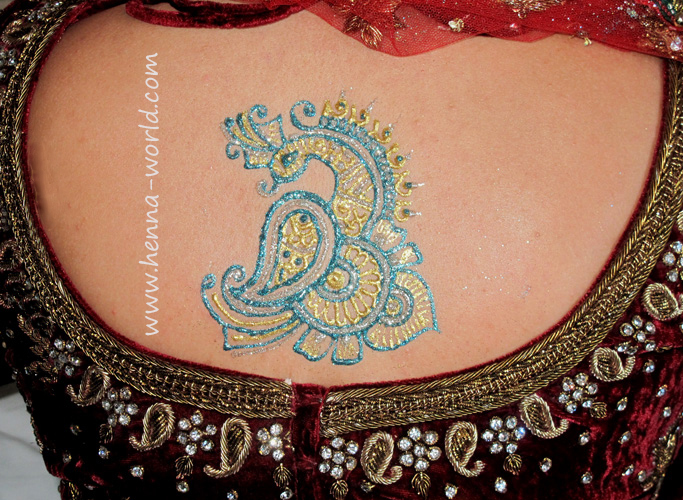
While nail polish allows henna designs to last longer, other color embellishments, such as zardosi, allows henna artists to pop color into their patterns. Zardosi mehendi is a mixture of henna, glitter, and hair gel – which makes for a glossy and bright display. Kamala has used zardosi color embellishments before, but she has to draw the henna the day of the bride’s wedding since the texture of the henna paste does not create a very long-lasting design.
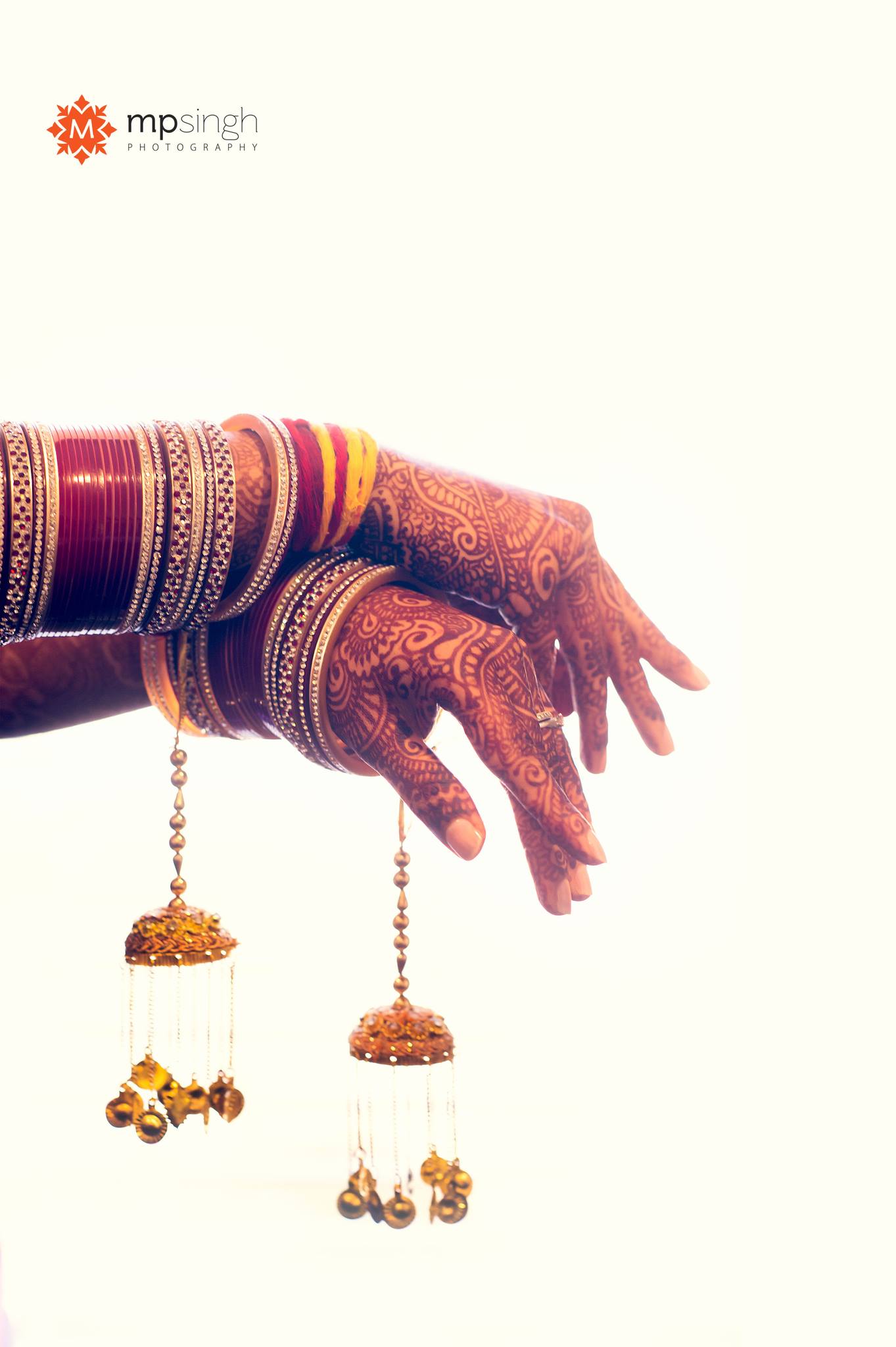
Photo by MP Singh Photography.
The world of henna is truly a wonder, with new tricks and trends popping up constantly. As for some dazzling tips, Kamala swears by the use of glitter – which is often sprinkled over a henna design before it dries. The sparkling after-effect really brings out the beauty of the mehendi and the bride on the special wedding day!
To contact Kamala, you can call (408)-691-9935 or visit her website at www.henna-world.com.

